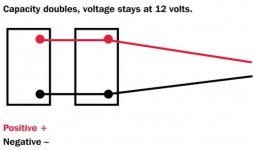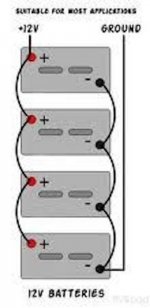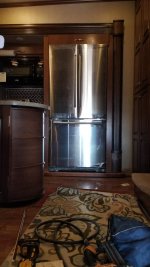Porthole, thanks as always for your detailed guidance. I don't mind spending the money if that is what needs to be done. As for my installer, he is not asking, I was more in the mode of I want done what I want done. He has done many of these and I've talked to folks he has done the work for and they are all very happy, so I believe I'm ok there. I am looking at a 2k or a 3k (better over kill then no enough) inverter. As for batteries, I just purchased 3 Group 31 AGM 12 volts. Each rated at 105 amp hours so I should be ok there as well. I know 6 volt would be better, but... And I know that the only way to go is pure sine wave, no question there at all. (at least I'm sure of one thing)

As for the wire, what I've read is somewhere between 0 and 2. As for location, my inverter will be about 1 foot from my batteries so I should be ok there as well (hey, what do ya' know, I'm good on 2 things).
If I am reading your set up right, you've run just about every circuit that runs anything electronic direct to your inverter so it will provide protections, etc. I already have the Progressive Industries in-line 50 amp system so that should help for spikes, etc., as well.
I tried looking up the inverter you have and can't find it. Can you provide a link.
Again, thanks so much. I really do appreciate it. (if electronics was only as easy as woodworking for me this would be a breeze!)
- - - Updated - - -
Residential was not offered when we got our Rig (purchased in Jul 2013) so... Really wish it was. And, about a month after we took delivery, they came up with the upgraded axle and disc brake option. Oh well. We also have the gen prep and I had the same progressive industries system installed that you have as well. We don't own a generator of any kind because we very rarely boondock and when we do, it is only for one night so I'm hoping that 3 Group 31 AGM batteries will be able to keep the fridge going until we start driving the next day.
If I'm understanding your comments, you took out the installed auto transfer switch. Is that correct? So your fridge is the only thing wired to your inverter. So do you need to turn anything on or off or does the Magnum have auto transfer.
If I do go with the Magnum it will be the 2000watt one at a minimum because I know I will have 2 fridges running so better safe than sorry.



